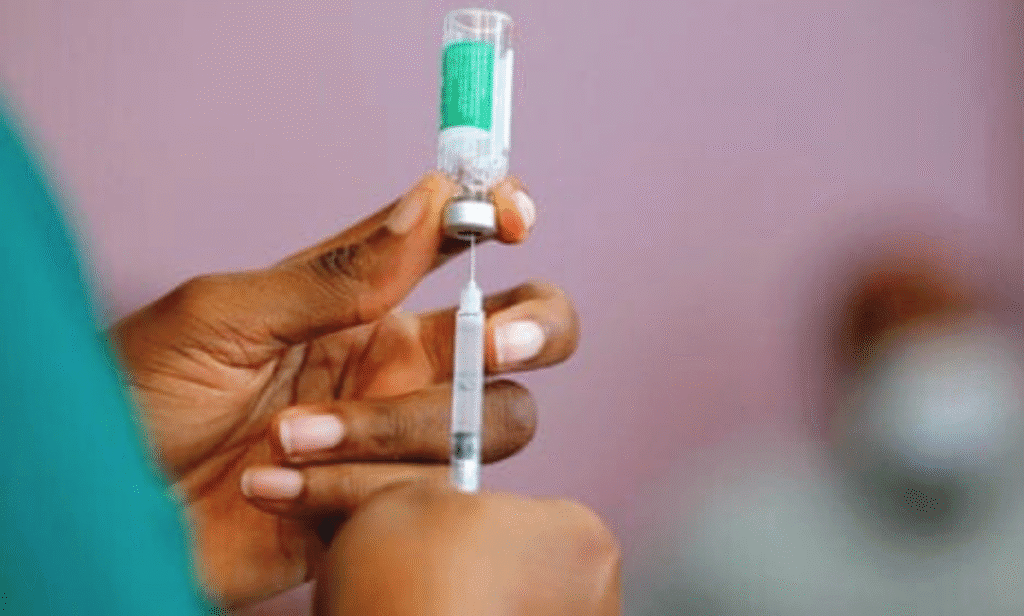
The Centers for Disease Control and Prevention (CDC) has officially shifted its stance on COVID-19 vaccinations, moving away from a one-size-fits-all approach. In a significant update, the agency’s independent panel of advisors voted to streamline recommendations, suggesting that Americans aged 65 and older receive an additional dose of the most recent COVID-19 vaccine this spring. For other age groups, the guidance has been simplified, aligning more closely with how annual flu shots are administered. This decision marks a new chapter in the nation’s public health strategy, treating COVID-19 as an endemic virus that requires ongoing, targeted management rather than a universal emergency response. The updated framework aims to provide clearer, more sustainable guidance for the public and healthcare providers.
This pivotal change was driven by a thorough review of the latest data on vaccine effectiveness and the evolving nature of the SARS-CoV-2 virus. Health officials noted that while the virus continues to circulate, the population has built up substantial immunity from previous infections and vaccinations. The primary concern now is protecting the most vulnerable segments of society from severe outcomes, including hospitalization and death. CDC Director Dr. Mandy Cohen endorsed the recommendation, emphasizing that this updated strategy ensures those at highest risk are prioritized. This move reflects a broader effort to integrate COVID-19 prevention into routine public health practice, making it a manageable part of seasonal respiratory illness planning alongside influenza and RSV.
Understanding the rationale behind the new guidance requires a look at the current COVID-19 landscape. The virus has not disappeared; instead, it circulates at varying levels, often surging during the fall and winter months. However, the immunological profile of the population has changed dramatically since 2020. A combination of prior infection and vaccination has created a high level of baseline immunity. The latest COVID-19 vaccines, which have been updated to target more recent variants, function similarly to annual flu shots by boosting this existing immunity. They are not designed to prevent all infections but are highly effective at training the immune system to prevent severe illness, a concept central to the CDC’s new public health calculus.
The core of the new recommendation centers on older adults. Individuals aged 65 and older are being advised to receive a second dose of the most recent COVID-19 vaccine, provided at least four months have passed since their last shot. This group has consistently borne the heaviest burden of the pandemic, accounting for the majority of COVID-19-related hospitalizations and deaths. As immune responses can wane more quickly in older individuals, this extra booster is considered a critical tool to reinforce their protection, especially ahead of any potential late-winter or spring wave. The decision underscores the continued serious risk the virus poses to this demographic, even as the overall public health threat has diminished.
For younger adults and children, the CDC’s guidance is now more straightforward. The advisory panel recommended that everyone aged 6 months and older should receive at least one dose of the updated COVID-19 vaccine. This simplifies the previously complex schedule of primary series and boosters. For most healthy children and adults, a single annual shot with the most current formula is considered sufficient to maintain adequate protection. This approach reduces confusion and aims to increase vaccination rates by making the process less complicated. It signals a shift from emergency response to long-term management, where getting an updated COVID shot becomes a routine part of personal healthcare, much like the seasonal flu vaccine.
The CDC’s Advisory Committee on Immunization Practices (ACIP), a group of medical and public health experts, was instrumental in forming these new guidelines. Their decision was based on evidence showing that the updated 2023-2024 COVID-19 vaccine provided about 54% increased protection against symptomatic infection in adults. More importantly, the vaccine’s effectiveness against severe disease requiring medical attention was significantly higher. This data confirmed that the vaccines are still a powerful defense, but their deployment needs to be strategic. The committee’s vote to focus on older adults represents a consensus that resources and public health messaging should be directed toward those who stand to benefit the most from an additional layer of protection.
Another key consideration for the panel was the concept of “immune imprinting.” This is the phenomenon where a person’s initial exposure to a virus, either through infection or vaccination, shapes their immune response to future variants. Some scientists have questioned whether repeated vaccination with similar formulas continues to provide a substantial benefit. However, the overwhelming body of evidence presented to the ACIP demonstrated that the updated vaccines, which are monovalent and target the XBB lineage of the Omicron variant, do indeed offer a significant boost in protection, especially against severe disease, regardless of a person’s prior exposure history.
The practical implications of this new guidance are significant for both individuals and the healthcare system. For a 75-year-old, it means scheduling an additional shot this spring. For a healthy 30-year-old, it may mean simply ensuring they have had one dose of the latest formula. Doctors’ offices and pharmacies will now have a clearer protocol to follow, which should streamline the vaccination process. Public health campaigns can now focus their messaging on the importance of annual COVID-19 vaccination for everyone, with a special emphasis on the critical need for seniors to stay up-to-date. This clarity is expected to help improve overall vaccine uptake.
It is crucial to distinguish these new recommendations from the initial vaccine rollout. The primary series of vaccines was essential for building a foundational level of immunity in a population that had never encountered the virus. Now, the goal is different. We are no longer building from zero; we are maintaining and updating our defenses. The updated vaccines are not “boosters” of the original shot in the traditional sense. They are better understood as new vaccine versions, retooled to match the currently circulating viruses more closely, which is why health officials often refer to them as “updated” doses rather than “boosters.”
The discussion also touched upon the importance of vaccination for individuals with certain underlying health conditions. While the strongest language was reserved for adults over 65, the CDC also emphasized that people of any age who are immunocompromised may need more frequent vaccinations or additional doses. This aligns with the existing recommendations for other vaccines, like the pneumonia shot. Healthcare providers are encouraged to have conversations with their patients about individual risk factors to determine the best, most personalized vaccination schedule. This personalized medicine approach is a hallmark of modern public health.
Public reaction to the updated guidelines has been mixed, reflecting the diverse perspectives within the population. Some welcome the simplified advice as a sign of a return to normalcy, while others express concern that it may lead to a false sense of security or neglect the risks of Long COVID. Health officials have acknowledged these concerns, stating that the recommendations are based on the best available data for preventing the most severe acute outcomes. They continue to recommend layered protection strategies, such as improving indoor ventilation and staying home when sick, as complementary measures to vaccination.
Looking ahead, the process for updating COVID-19 vaccines is expected to become even more streamlined. The Food and Drug Administration (FDA) is already working with vaccine manufacturers to select a strain for the fall 2024 vaccine, a process that mirrors the long-established system for the annual flu shot. This predictability will allow for more efficient production and distribution. It also solidifies the concept that for the foreseeable future, COVID-19 will be a virus we manage with periodic vaccinations, adapting our tools as the virus itself adapts and evolves.
The scientific debate surrounding the frequency and necessity of COVID-19 vaccinations for different age groups is ongoing. Some experts argue that the focus should remain squarely on the highest-risk populations, while others believe a broader annual recommendation is necessary to curb community transmission and protect against new variants. The CDC’s latest guidance strikes a balance between these views, establishing a baseline of annual protection for all while providing enhanced support for those who need it most. This flexible framework is designed to be updated as new evidence emerges, ensuring that public health policy remains responsive to the virus’s behavior.
The role of personal responsibility has become increasingly prominent in the latest phase of the pandemic. With universal recommendations being dialed back, the onus is now on individuals to assess their own risk and stay informed about the latest public health advice. The CDC’s new guidelines provide a clear roadmap, but it is up to each person to consult with their doctor and make the decision that is right for their health. This shift acknowledges that a one-size-fits-all policy is no longer necessary or practical, and that a more nuanced approach is required for the long-term management of COVID-19.
